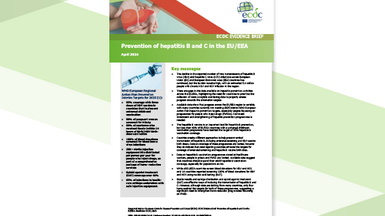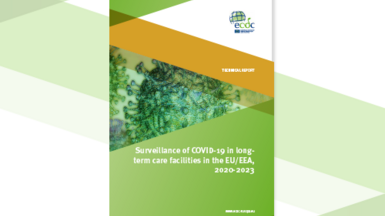Chlamydia control in Europe: literature review
This report brings together published evidence about the prevalence and reproductive tract complications of chlamydia infection, and about the effectiveness and cost-effectiveness of chlamydia screening interventions.
Executive Summary
The review concludes that chlamydia prevalence estimates from surveys in EU/EEA Member States are very heterogeneous and vary by country, sex, age group, national coverage and inclusion of all or only sexually experienced participants. In sexually experienced women aged 15–24 years and representative of the general population, chlamydia prevalence estimates range from 3.0% (18–24 year olds in UK) to 4.7% (18–24 year olds in Slovenia). Similarly, prevalence estimates in men aged 15–24 years ranged from 0.4% (16–17 year olds in Germany) to 4.7% (18–24 year olds in Slovenia).
These variations could be explained with differences in sexual behaviours, practices and mixing, health care seeking behaviours and self-medication, as well as access to health care, testing and chlamydia control activities. Additionally, the diversity of surveys and studies’ designs make it difficult to carry out direct comparisons or to aggregate their results.
Reproductive tract complications of chlamydia infection
The ECDC review estimates the probability of pelvic inflammatory disease in women with untreated chlamydia infection after 12 month to be 9%, which is lower than estimates from studies conducted in clinic settings. Both symptomatic and asymptomatic chlamydia infection in women were found to be strongly associated with pelvic inflammatory disease.
The review suggests a low risk of developing ectopic pregnancy and tubal infertility, the reproductive sequelae in the final stages of chlamydial disease. This low probability of tubal factor infertility might explain the lack of association observed in the few studies that have examined long term reproductive tract outcomes in women with chlamydia or pelvic inflammatory disease.
Chlamydia screening: effectiveness and cost-effectiveness
The findings of this review suggest that there is a window of opportunity in which treatment for screen-detected chlamydia can interrupt tubal pathology. However, untreated or inadequately treated partners can limit the effectiveness of screening and favour re-infections or can leave other partners in a sexual network untreated.
Most studies concluded that at least one strategy for chlamydia screening is cost-effective. These conclusions were often based on studies of women in clinical settings or in high-risk groups, making them less applicable to current practice and in favour of screening.







